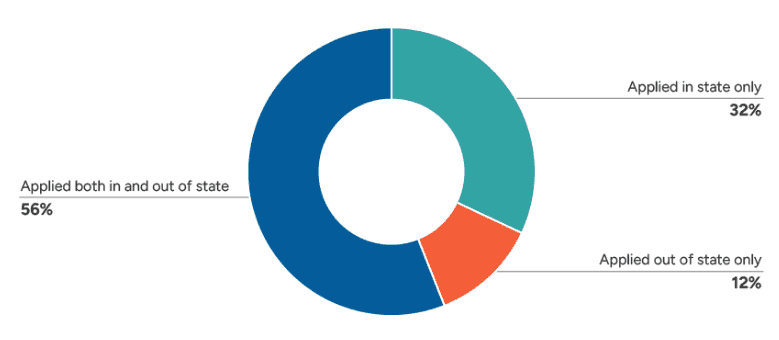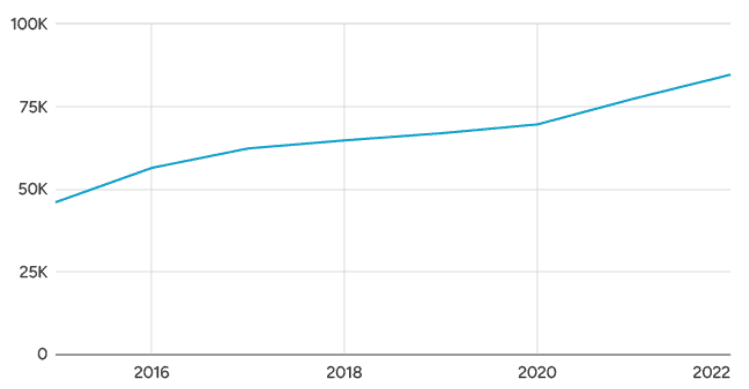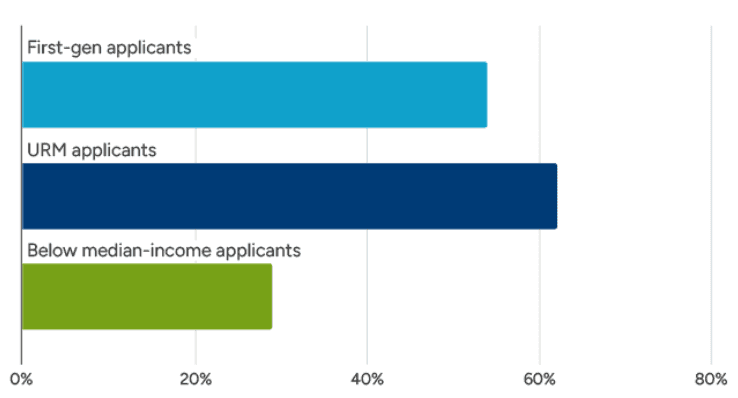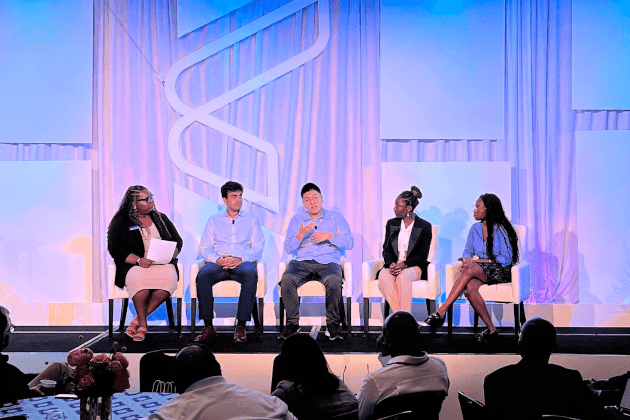Driving Growth: See how these universities boosted enrollment

Though the University of Illinois Chicago (UIC) and Illinois State University (ISU) are both state institutions in very different environments–one urban, one rural, both are finding success using Common App to reach their recruitment goals.
UIC, located in the University Village neighborhood of Chicago, has historically catered to commuter students and those seeking a vibrant urban campus experience. While its residential ranks have grown dramatically in recent years, it continues to maintain and serve a majority local population.
Illinois State revels in the college town atmosphere of Normal, Illinois. Founded as a teacher’s college, ISU remains a top destination for undergraduates, many of whom pursue degrees in education.
Both are taking advantage of Common App’s features to meet the needs of underrepresented student applicants effectively while supporting their enrollment goals.
Increasing their reach
Both the UIC and ISU experienced substantial applicant growth after signing on to Common App. “We were actually the first public institution in Illinois to join Common App back in 2012. Since that time, our enrollment has increased by fifty percent.,” says Maureen Woods, Executive Director of Strategic Recruitment and Outreach at UIC. “We have been on a consistent, steady track of growth with a short exception for COVID. In fall 2023, we enrolled the largest first-year class in UIC history,” she says, noting that the university feels like it’s back on track after dealing with challenges related to the pandemic.
ISU, which joined Common App in the midst of the pandemic, reported experiencing a 20% increase in applications in 2022. That fall, the university had its largest incoming freshman class in 35 years. For its 2023-24 academic year, it welcomed more than 4,000 first-year students, a 4% increase from the previous year.
Focusing resources effectively
For many state institutions interested in growing their brand recognition, Common App can provide additional exposure. This allows them to better understand their potential applicant pool so they can invest their budgets wisely.
“We’re a large public institution but have a relatively small budget for marketing,” Woods told me, noting that Common App allows them to make an immediate introduction to prospective students. While the university has traditionally attracted students from the Chicago area, it has seen a steady rise in both out-of-state and international students since joining Common App.
In the Midwest, students often choose to stay within their own region. 56% of Midwestern students apply both in and outside of their home states, while 32% of Midwesterners look only in state.
Most Midwestern students apply both in and out of state

The great majority of ISU students come from Illinois, and being a Common App member improves awareness among potential students and makes the process easy, an increasingly important factor for prospective applicants, says Jeff Mavros, ISU’s Executive Director of Admissions and Recruitment Marketing.
Also important to ISU’s Chicago-based students—the ability to visit the university. As ISU noticed that some prospective students had trouble visiting the university, it developed deeper relationships with community organizations to introduce themselves better and provide organized bus trips to visit the school. “We want to be more accessible to underserved populations–and some students don’t have the same family support or resources that others enjoy,” Mavros says, noting that it can be difficult for parents to take time off to visit potential colleges.
Meeting students where they are
Across the Midwest, we’ve noted a steady rise in applications among populations of traditionally underserved students. Between the 2015 and 2022 application seasons, we noted a 54% increase in first-generation applicants, a 62 percent increase in underrepresented minority students, and a 29% increase among applicants from below medium-income communities.
Increase in below median-income applicants since 2015

Since 2015, the number of students from below median-income ZIP codes across the Midwest has grown dramatically from 46,042 to 84,555 in 2022, helping drive access for a generation of applicants.
Percentage growth in underrepresented applicants from 2015 to 2022

UIC is considered one of the most diverse schools in the nation. With no ethnic majority and multiple designations as minority-serving, Common App's accessibility plays a large role. “Just like Common App, whose central mission is to improve accessibility, the demystification of the college application process is central to who we are,” Woods says.
“We want to be a place that’s offering opportunity,” says Mavros, whose institution provided approximately eight out of 10 of its students with some form of financial aid in its 2023 fiscal year. “We remove barriers for students when we hear from them that something in our process is arduous,” he says, including waiving fees when appropriate. That drive to remove barriers has even led ISU to customize language on their Common App platform to appeal to multiple student populations.
Increasing efficiency
Common App provides both institutions with additional benefits. When UIC joined in 2012, for example, it went to a digital process. “It was game-changing,” Woods says. The electronic credentials and easy process have allowed them to manage the application review process more quickly, she adds.
For the student, convenience is equally important, ISU’s Mavros says. “It’s all about convenience and simplicity and an intuitive interface,” he says. “They live in a world where everything is easy and online, and Common App has created a level of convenience that hasn’t been matched in this space.”
Custom enhancements
Both universities noted ways they have customized their application via Common App. UIC, for example, is test-optional, yet worked with us to integrate a new process allowing students to upload their standardized test scores themselves, cutting the wait time for a large number of applicants.
ISU, meanwhile, is taking advantage of conditional logic to make the application itself feel more personal to individual students. “The point of Common App is that it’s convenient,” Mavros says. “But we’re able to walk that fine line between keeping what makes Common App common while making it our own so that students have a slightly different experience than applying somewhere else.”
These enhancements take advantage of the core value of Common App. In addition to serving as a technology platform for university admissions partners, we’re working hand in hand with them to remove barriers for thousands of students who may not have applied at all.
Elyse Armstrong is a Data Scientist on Common App's Data Analytics and Research (DAR) team, supporting our data operations, visualizations, and reporting efforts. She is dedicated to creating equity in the college admissions process and using data to transform student experiences and outcomes.



